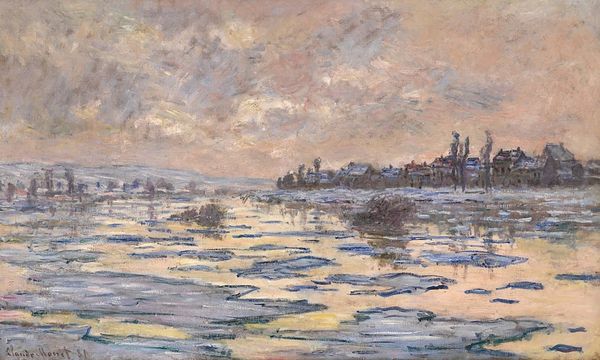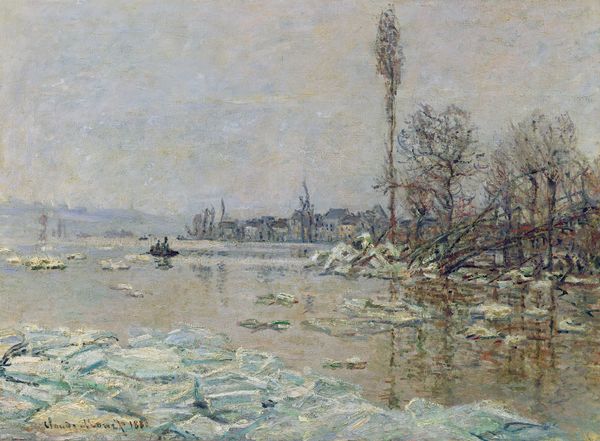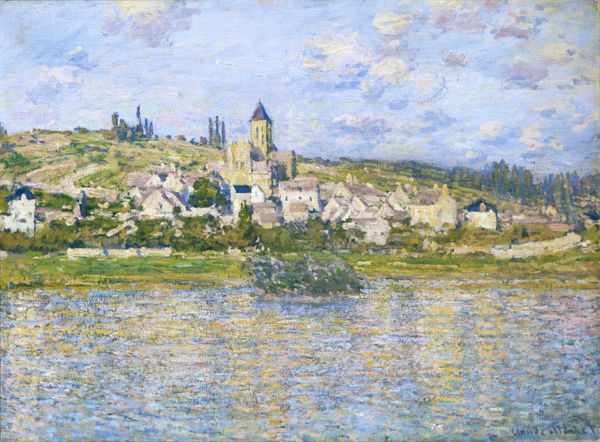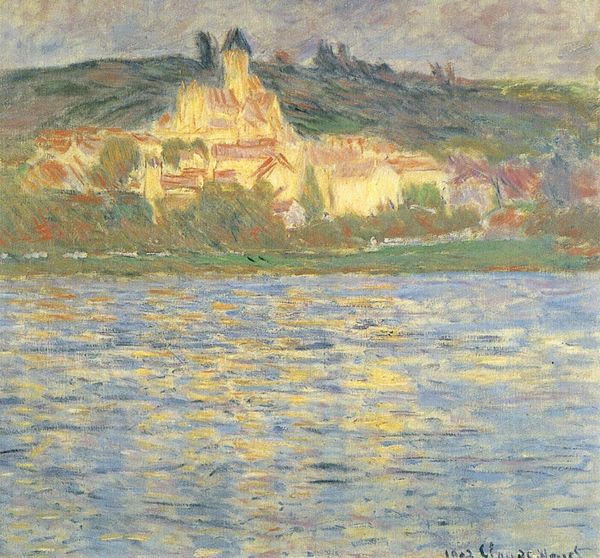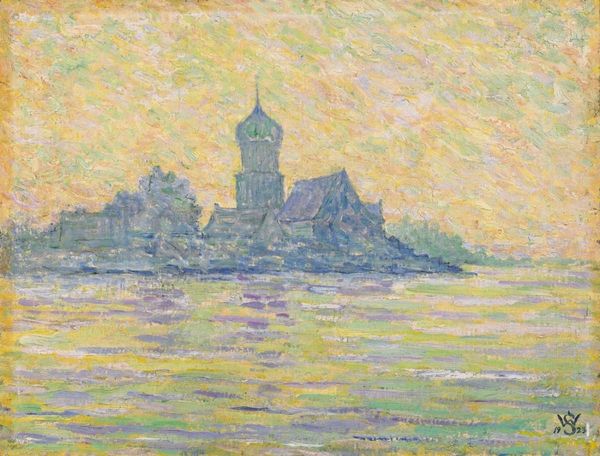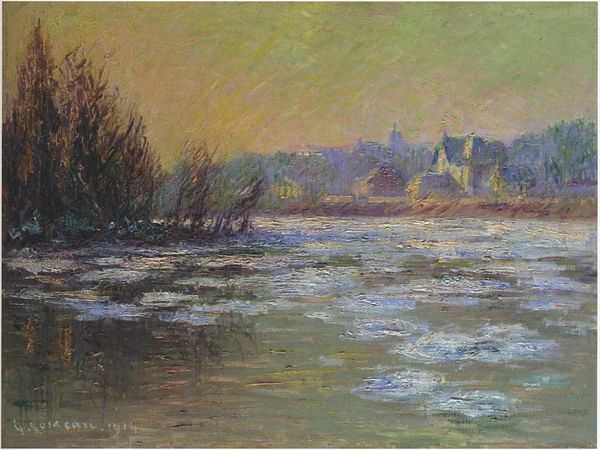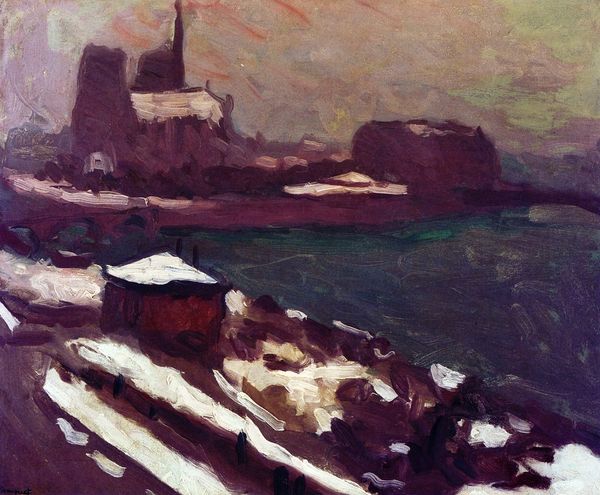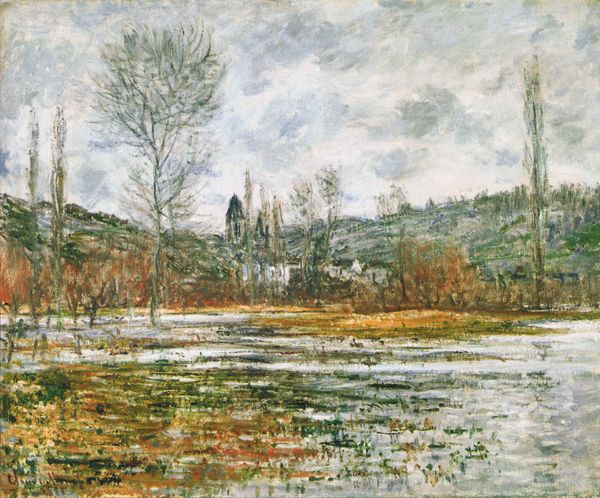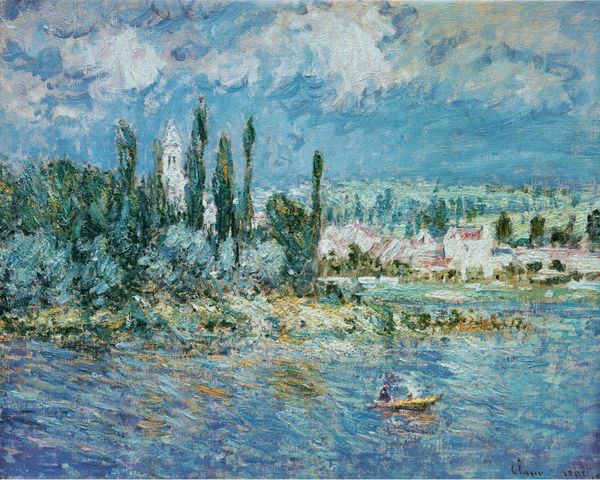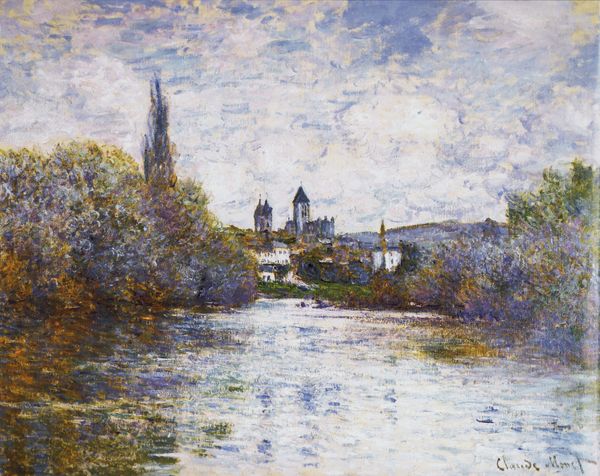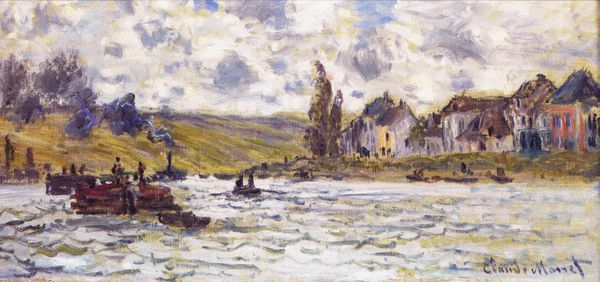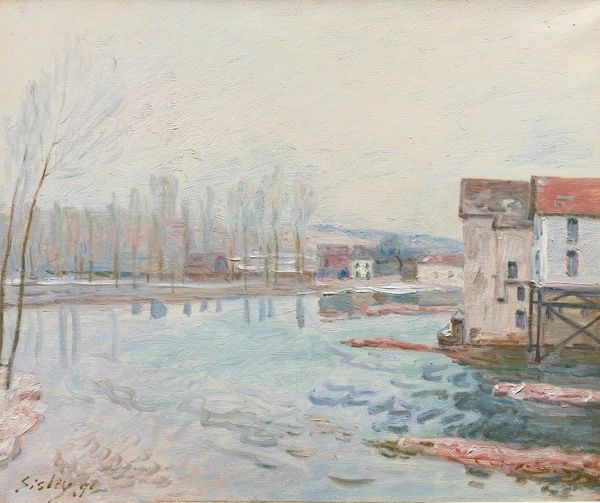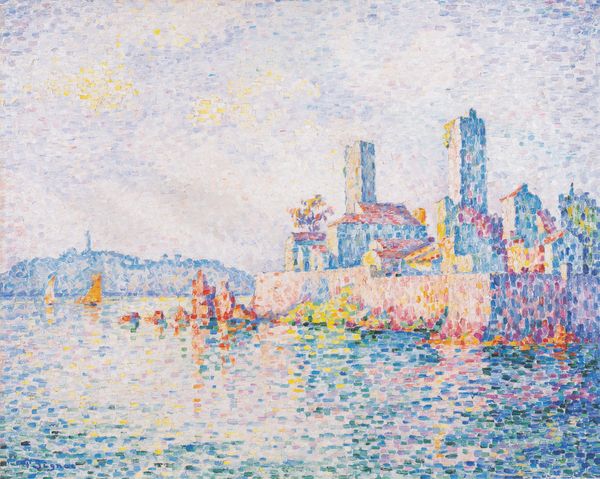
painting, plein-air, oil-paint
#
sky
#
painting
#
impressionism
#
plein-air
#
oil-paint
#
landscape
#
impressionist landscape
#
geometric
#
cityscape
#
realism
#
monochrome
Copyright: Public domain
Editor: Here we have Claude Monet’s "Vetheuil, Ice Floes," painted in 1881, rendered with oil paint. It evokes such a tranquil yet melancholic atmosphere with its subdued blues and whites. What do you see in this piece from a formalist perspective? Curator: This painting is compelling because of its sophisticated use of color and structure. Note the near-monochromatic palette; Monet masterfully modulates the blue hues to create depth and atmospheric perspective. The composition divides roughly into thirds, horizon at top third, establishing a tension between the frozen river and the built environment. Editor: I see how the arrangement and color contribute to the overall feeling. The reflection of the town in the water almost dissolves the buildings. Was that his intention? Curator: Possibly. Consider how the brushstrokes function: broken, gestural marks, built up in layers, construct both the solid forms of the town and the ephemeral quality of light on water. Ask yourself if the formal aspects emphasize the transient nature of the scene? What does the thawing of the ice say about nature and temporality, rendered formally? Editor: That makes me consider the ice floes as individual brushstrokes themselves, mirroring the town but broken and fragmented. The painting seems to echo the fragmentation of modern life. Curator: Precisely. And notice that while representational, it is also bordering on abstraction. Monet focuses less on precise representation and more on the interplay of light and form. These elements invite the viewer to consider the very essence of painting itself. Editor: I hadn't considered how much the process of painting is evident in the finished work. Thank you; I’m viewing the painting in a new light. Curator: Indeed, considering the formal qualities opens doors to understanding both the artist’s intention and the broader context of art historical development.
Comments
No comments
Be the first to comment and join the conversation on the ultimate creative platform.
